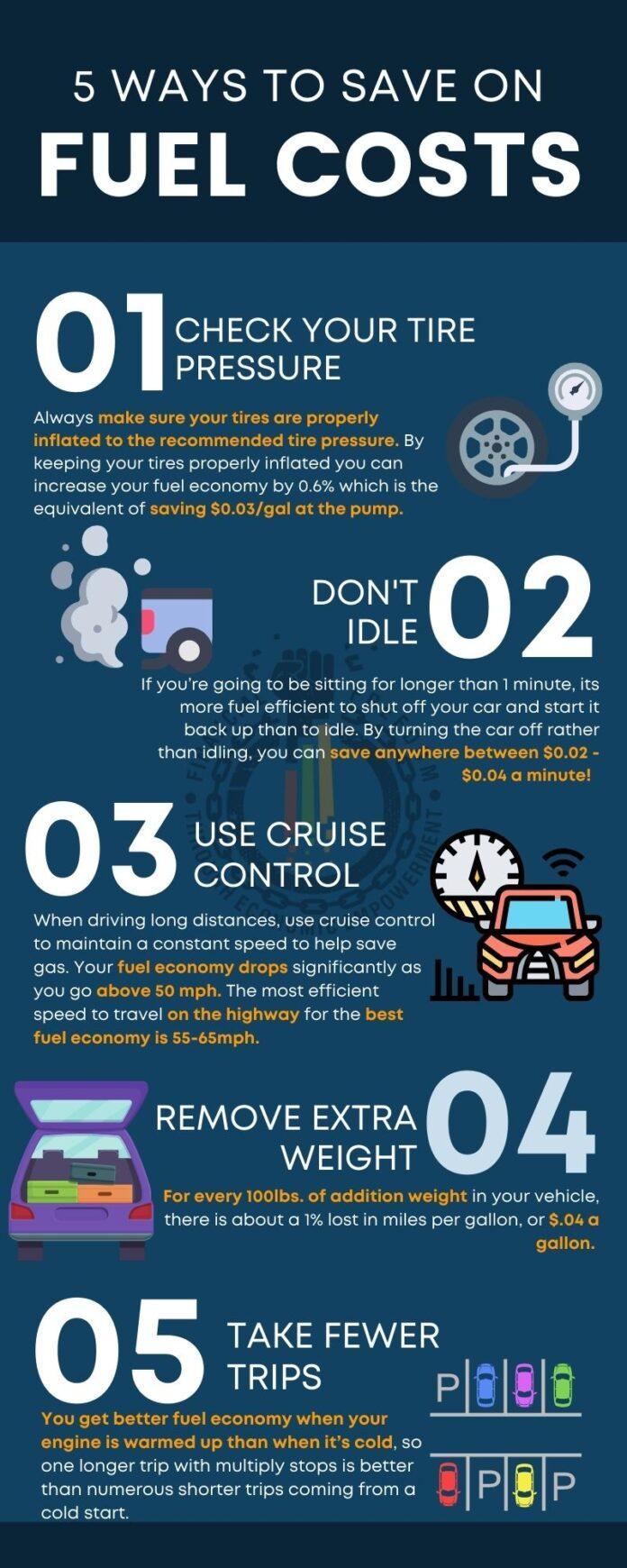With gas prices reaching still sky-high across the country, everybody is feeling the pain at the pump. According to AAA, America’s largest motoring and leisure travel membership organization, the national gas average has reached $3.501/gal, an increase from the national average of just $2.871/gal a few years ago.
To help alleviate the pain at the pump and keep more of your money in your pocket, here are 10 easy tips you can follow today to help you spend less on gas.
1. KEEP YOUR TIRES PROPERLY INFLATED
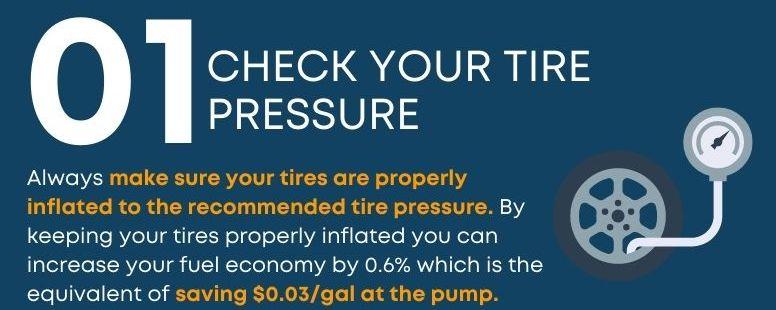
Always make sure your tires are properly inflated to the recommended tire pressure. According to GasBuddy.com, “A single tire under inflated by 2 PSI, increases fuel consumption by 1%.”.
By keeping your tires properly inflated you can increase your fuel economy by 0.6% which is the equivalent of saving $0.03/gal at the pump. Not only will keeping your tires at the recommended PSI save you money in the short-term, but it’ll also extend the life of your tires which will save you money in the long-term as well (not to mention they’re safer to drive on).
You can find the manufacturer recommend tire pressure in your owner’s manual or on the sticker located on the driver’s side door.
2. DON’T IDLE YOUR VEHICLE
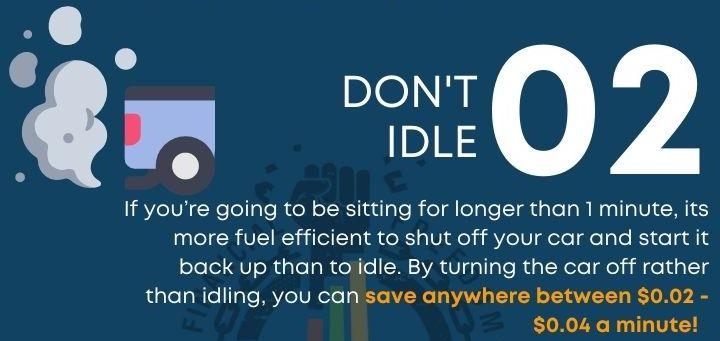
One of the easiest ways to save on fuel economy is to not idle your vehicle. Idling is when you leave your engine running, but the car is in park. If you’re going to be sitting for longer than 1 minute, its more fuel efficient to shut off your car and start it back up than to idle. By turning the car off rather than idling, you can save anywhere between $0.02 — $0.04 a minute!
Besides being bad for your wallet, idling is also bad for the environment. For every 10 minutes of idling, your vehicle is releasing 1lb. of carbon dioxide into the atmosphere.
3. USE CRUISE CONTROL FOR BETTER FUEL ECONOMY
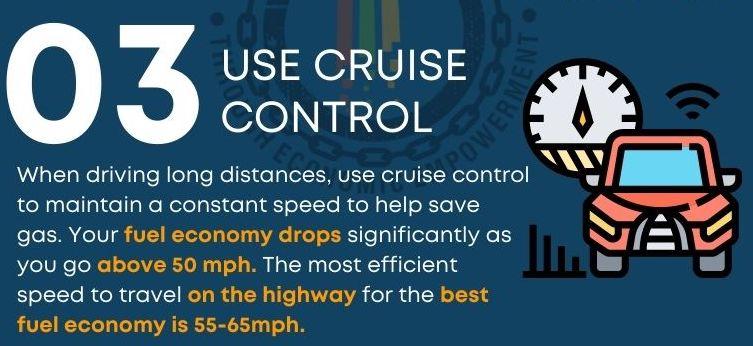
When driving long distances or on the highway, use cruise control to maintain a constant speed to help save gas. Your fuel economy drops significantly as you go above 50 mph, with the most efficient speed to travel on the highway for the best fuel economy is 55–65mph.
On the other end of the speed spectrum, when driving in the city or low-speed areas you can increase your fuel efficiency by as much as 20% by:
- Anticipating red lights and traffic to avoid hard stops and allow your car to gradually coast down to lower speeds until it’s time to stop
- Avoiding constant braking and accelerating which consumes additional fuel
4. REMOVE EXCESSIVE WEIGHT FROM YOUR VEHICLE
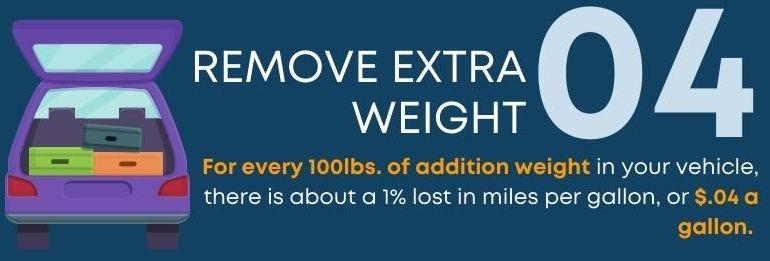
For every 100lbs. of addition weight in your vehicle there is a 1% lost in miles per gallon, or $.04 a gallon. In the warmer months, unload all those heavy winter supplies and only store items in your car that you need.
If you have a cargo bin on top of your car, remove it when you’re not using it. The aerodynamic drag caused by the bin can reduce your fuel economy anywhere from 2% during city driving and up to 25% during highway driving.
5. COMBINE TRIPS TO SAVE TIME AND MONEY
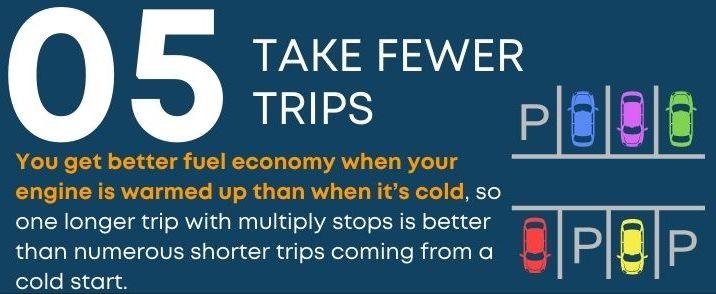
Rather than taking several short trips throughout the week, try to plan out where you need to go and combine all your stops into one trip. Combining trips can help you save time and money because instead of coming from home for each individual errand, you’ll already be out and can go from stop-to-stop successively.
By driving to each stop back-to-back you’ll reduce the amount of time you drive with a cold engine. You get better fuel economy when your engine is warmed up than when it’s cold, so one longer trip with multiply stops is better than numerous shorter trips coming from a cold start.
This tip takes a little bit of planning upfront, but it’ll save you a ton of money in the long run.
5 BONUS TIPS!!!!!
6. SERVICE YOUR VEHICLE REGULARLY
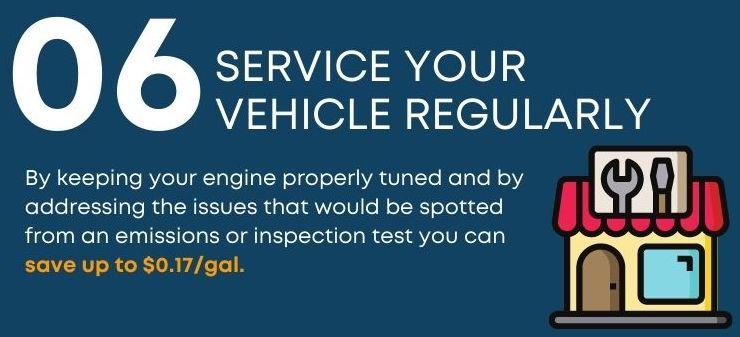
Properly maintaining your vehicle can help you avoid poor fuel economy related to dirty air filters, old spark plugs or low fluid levels. One way you can find out if your vehicle isn’t running at optimal levels is by taking your vehicle in for an annual emissions and inspections test. In some states these tests are required, but if they’re not, consider visiting a mechanic on an annual basis to ensure your car is safe and running efficiently.
By keeping your engine properly tuned, and by addressing the issues that would be spotted from an emissions or inspection test you can save up to $0.17/gal.
7. USE THE MANUFACTURER’S RECOMMENDED GRADE OF MOTOR OIL
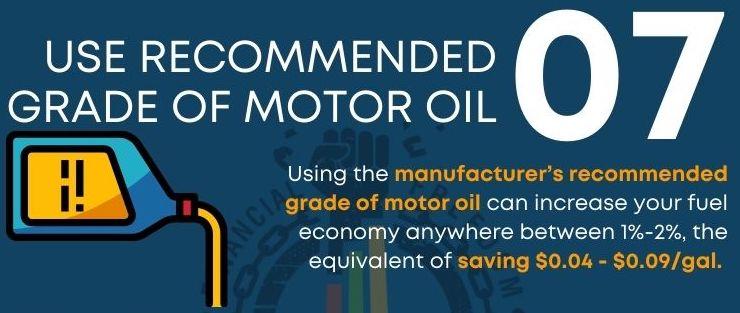
Using the manufacturer’s recommended grade of motor oil can increase your fuel economy anywhere between 1%-2%, the equivalent of saving $0.04 — $0.09/gal. While using a motor oil with a viscosity one grade higher or lower than what’s recommended generally poses no long-term harm to your vehicle, modern vehicles are built to run on lower viscosity oil which reduces internal friction, improving the vehicles fuel economy while also preventing the buildup of sludge and deposits.
8. USE APPS TO FIND CHEAP GAS
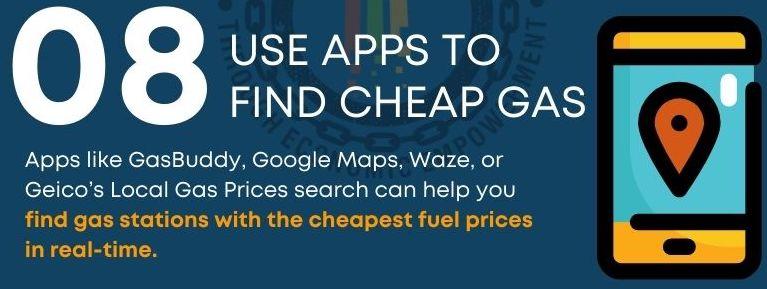
Apps like GasBuddy, Google Maps, Waze, or Geico’s Local Gas Prices search can help you find gas stations with the cheapest fuel prices in real-time.
GasBuddy offers a particularly useful feature in their Trip Cost Calculator. The Trip Cost Calculator helps you find the cheapest gas stations along your route and estimates your total trip cost, gas mileage, gallons used, and your total fuel cost savings!
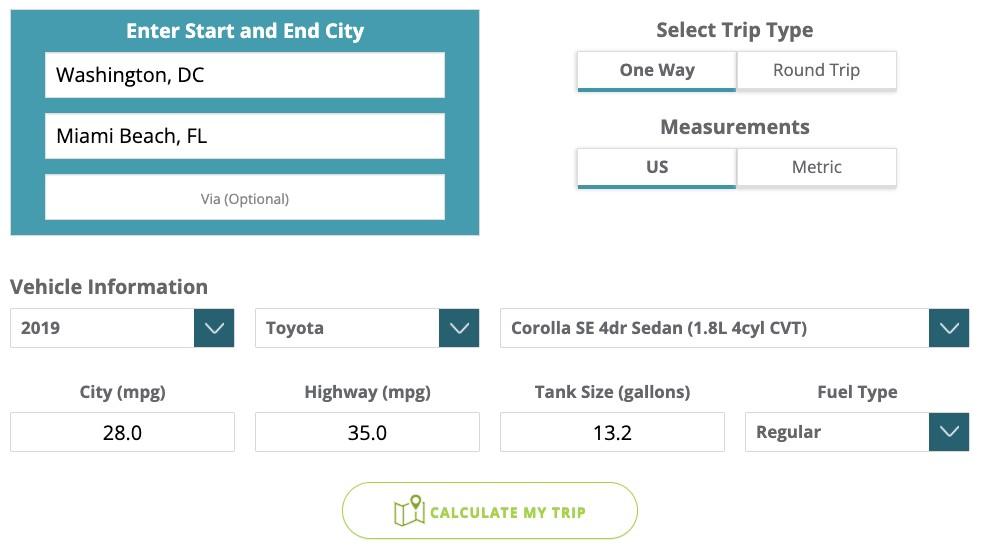
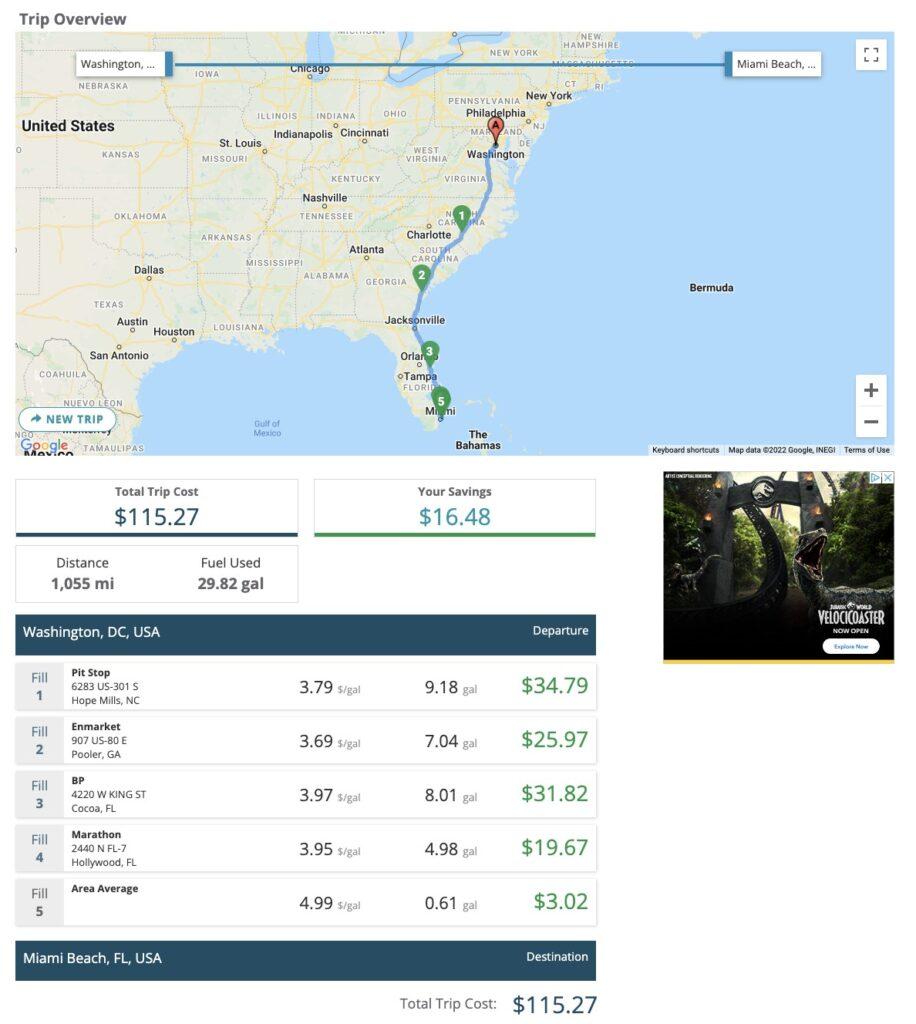
Also, take into consideration that gas prices are typically cheaper on Tuesdays and Wednesdays, and increase on Thursday in anticipation of weekend travel. Prices also tend to be lower before 9am because station owners haven’t had time to check the competition.
9. CONSIDER PURCHASING A MORE FUEL-EFFICIENT VEHICLE
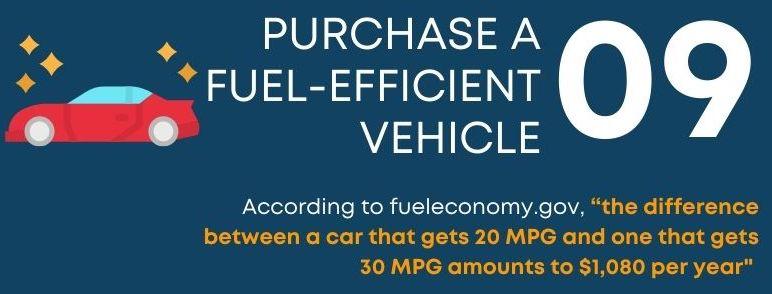
Are you in the market for a new car? According to fueleconomy.gov, the official U.S. Government website for fuel economy information, “the difference between a car that gets 20 MPG and one that gets 30 MPG amounts to $1,080 per year (assuming 15,000 miles of driving annually and a fuel cost of $4.32).” Over the course of a typical 60-month car note, that amounts to a savings of $5,400!
Bonus fact: smaller vehicles with manual transmissions usually have better fuel economy than automatic transmission. According to the Consumer Report, cars with manual transmission can have improved gas mileage by 2 to 5 miles per gallon, and are also less expensive to purchase by $800 to $1,200.
10. KNOW WHEN TO ROLL DOWN THE WINDOWS VERSUS USING THE A/C
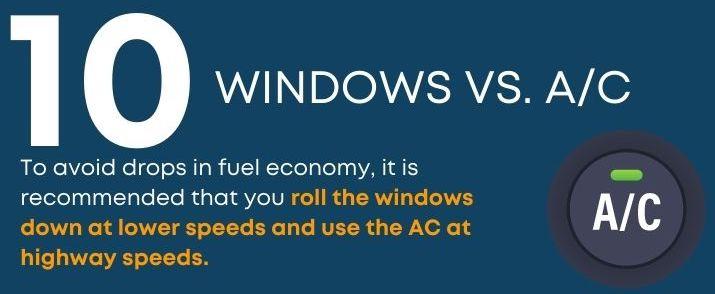
Driving with your windows down increases your cars drag and decrease your fuel economy. At highway speeds, the increased drag can decrease your fuel economy by as much as 20% or more. On the flip side, the use of A/C can decrease your fuel economy by 10%.
To avoid these drops in fuel economy, it is recommended that you roll the windows down at lower speeds and use the AC at highway speeds. The impact to your fuel economy by having your windows down at lower speeds isn’t as great as having the A/C on when speeds are under 50 miles per hour.
Another great tip to save on fuel during the hot summer months is to avoid blasting the A/C by parking in shaded areas and rolling down your windows to let the hot air dissipate before cutting on the A/C.
IN CONCLUSION
With routine maintenance and the adjustment of a few driving habits, you can see fuel cost savings in thousands of dollars a year! Do you have any fuel or driving tips that help you save money at the pump? If so, share your tips with the Black Wall Street community in the comments section.











